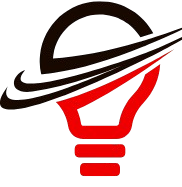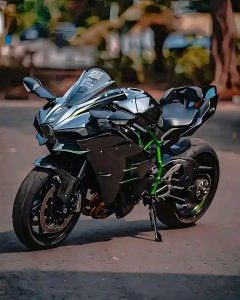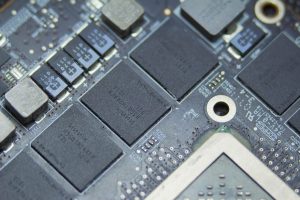When you’re working with a Kawasaki engine, one of the first questions that might come up is: which way does the engine turn? Understanding the direction of rotation is crucial, whether you’re performing basic maintenance, replacing engine components, or making tuning adjustments. As a mechanic or enthusiast, knowing this detail can save you time and prevent potential mistakes.
But is the engine’s rotation really that important? In this article, I’ll walk you through everything you need to know about the rotational direction of Kawasaki engines, why it matters, and how it can impact the functionality of your motorcycle or vehicle.
Why Knowing the Engine Rotation is Important
Before diving into the specifics of Kawasaki engines, it’s essential to understand why the direction in which an engine turns matters. The direction of rotation determines:
- Correct Installation of Components: Certain engine parts, such as the timing chain, crankshaft, and ignition systems, are designed to rotate in a specific direction. Incorrect installation can lead to premature failure.
- Tuning and Performance: Many performance modifications, such as camshaft timing and valve adjustments, are highly dependent on the direction of rotation.
- Reassembly of the Engine: When disassembling and reassembling your Kawasaki engine, knowing the rotation direction ensures that components are correctly aligned, and systems work as intended.
- Safety: For maintenance tasks like valve clearance checks or chain adjustments, knowing the direction helps ensure you don’t cause any unintended damage.
Kawasaki Engine Rotation Overview
Most Kawasaki engines, like those in motorcycles, ATV’s, and small engines, typically rotate in a clockwise direction when viewed from the front of the engine. However, there are exceptions based on the specific engine model and application, particularly in certain racing or high-performance configurations. Understanding whether you’re working with a left-hand or right-hand rotation engine is critical when performing any work that involves timing, belt drives, or gear arrangements.
You may also like to read: Which Duct Tape to Use on Motorcycle Air Filters
Clockwise vs. Counterclockwise Rotation
- Clockwise Rotation (Right-Hand Rotation):
- The crankshaft rotates in a clockwise direction when viewed from the front of the engine.
- This is the most common configuration for most Kawasaki motorcycles and small engines.
- Counterclockwise Rotation (Left-Hand Rotation):
- In specific racing engines or configurations (such as some Kawasaki engines used in boats or specialty vehicles), the engine may rotate counterclockwise.
- This is less common and usually found in specialized applications.
Identifying the Rotation Direction in Your Kawasaki Engine
For the most part, you can determine the direction of rotation of your Kawasaki engine by simply looking at the engine’s design. Here’s a general guideline for how you can do it:
- Examine the Crankshaft: If you can access the crankshaft, turn it manually. The direction the crankshaft turns will give you an immediate clue.
- Check for Markings: Most engines have rotation arrows marked near key parts (such as the flywheel or crankcase) to show the correct direction.
- Consult the Owner’s Manual: The manual usually provides specific information about the engine’s rotation and any other crucial details for maintenance or repairs.
Common Kawasaki Engines and Their Rotation Directions
Different Kawasaki engine models may have different rotation directions based on their use cases. Here’s a quick overview of some of the more common Kawasaki engine types:
1. Kawasaki Ninja Series (Motorcycles)
- Rotation Direction: Clockwise
- Description: Most Kawasaki Ninja motorcycles (like the ZX6R or ZX10R) use engines with clockwise rotation. These high-performance engines have a unique design where all rotating components are optimized for this direction.
2. Kawasaki KX Series (Dirt Bikes)
- Rotation Direction: Clockwise
- Description: Similar to the Ninja series, Kawasaki’s KX dirt bike engines are built with a clockwise rotating crankshaft. These are optimized for rugged, off-road performance, where engine reliability is paramount.
3. Kawasaki Small Engines (Lawnmowers, Generators)
- Rotation Direction: Clockwise or Counterclockwise (depends on model)
- Description: Small engines found in lawnmowers and generators may have either clockwise or counterclockwise rotation. It’s critical to check the model-specific guidelines for accurate maintenance and installation.
4. Kawasaki Jet Ski Engines (STX, Ultra, etc.)
- Rotation Direction: Clockwise or Counterclockwise (depends on engine design)
- Description: Watercraft engines, like those in Kawasaki Jet Skis, may feature a counterclockwise rotation. This is due to specific cooling and torque requirements in the marine environment.
5. Kawasaki Mule (Utility Vehicles)
- Rotation Direction: Clockwise
- Description: These utility vehicles, often used in agriculture or off-road tasks, generally feature clockwise rotating engines, ensuring they perform optimally in a variety of rugged conditions.
The Importance of Correct Cable Interface in Kawasaki Engines
When dealing with Kawasaki engines, especially those in motorcycles and ATVs, understanding the importance of correct cable interfaces cannot be overstated. For engine management, ignition systems, and performance tuning, cables often serve as the critical link between components.
- Throttle Cables: Ensure that throttle cables are set up correctly to maintain proper fuel-air mixture.
- Brake Cables: Vital for controlling your engine’s braking mechanism in ATV and motorcycle systems.
- Ignition and Timing Cables: These cables directly affect engine ignition and timing, which are sensitive to rotational direction.
Tech Specs and Recommendations for Kawasaki Engine Maintenance
Engine Type: Inline 4, V-Twin, or Single Cylinder
- Material: Cast Iron or Aluminum for durability and lightweight performance
- Cooling System: Liquid or Air-cooled based on model
Recommended Tools:
- Torque Wrench: To ensure bolts are tightened to specifications
- Cable Lubricants: Keeps cables functioning smoothly
- Engine Timing Tools: For precise adjustments related to rotation direction
Pros and Cons of Different Engine Rotation Directions
| Feature | Clockwise Rotation | Counterclockwise Rotation |
| Engine Compatibility | Widely used in most motorcycle engines | Found in specific high-performance or marine engines |
| Installation | Easier to install with common parts | May require specialized components |
| Performance | Efficient for most street and off-road use | Used for specific high-torque or racing engines |
| Maintenance | Standardized for common tools and parts | Requires unique maintenance techniques |
Pros of Kawasaki Engines with Clockwise Rotation
- Wider Compatibility: Easier to find parts and components for maintenance.
- Simplicity: Standard setup allows for more straightforward adjustments and installations.
- Performance: Typically better suited for high-speed performance.
Cons of Kawasaki Engines with Clockwise Rotation
- Wear Over Time: Depending on the usage, clockwise engines can experience more wear if not properly maintained.
- Complex Installations in Some Models: While common, certain Kawasaki models may require unique setups.

















